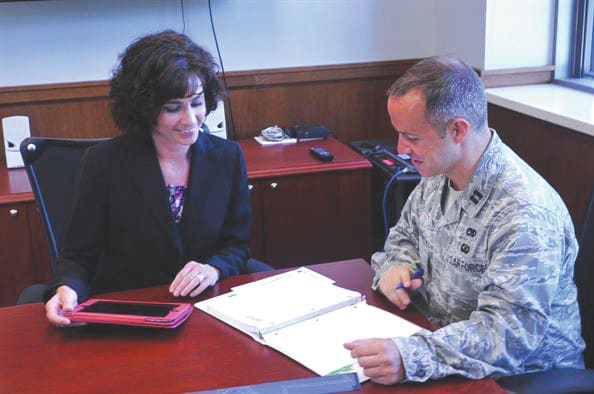
Greene County News
WRIGHT-PATTERSON AIR FORCE BASE — Every Airman, every aircraft, every day is the motto of the Air Force Life Cycle Management Center’s Agile Combat Support Directorate headquartered at Wright-Patterson Air Force Base.
As one of the most complex organizations in the Air Force — with a $9 billion budget and approximately 1,654 employees — ACS lives up to this motto by delivering a wide range of capabilities that support warfighters and enables Airmen around the world to do their job.
“This is a very diverse organization,” said Lynda Rutledge, program executive officer and director of ACS. “We have 600 programs in this portfolio and some of these programs contain hundreds of end items each. What we do truly ‘touches’ Airmen and systems every day.”
For example, every Airmen needs a uniform.
The Air Force Uniform Office, which falls under ACS’s Human System division, designs and develops a variety of uniforms and equipment that enhance the performance and combat readiness of the more than 300,000 Airmen worldwide.
Need air support?
ACS acquires and sustains the targeting systems that most USAF fighter and bomber aircraft (and many foreign military customers) use to identify and take out targets on the ground, Rutledge said. She added that ACS is responsible for the common navigation systems that guide the aircraft.
The organization is also responsible for the simulators that train pilots to fly.
“We manage modernization and sustainment of nearly all the aircraft training simulators in the Air Force,” Rutledge said. “The simulators we acquire and support provide Airmen including thousands of pilots and maintainers with realistic training. Quite simply, the Air Force doesn’t fly without our simulators.”
Other ways the directorate enables missions/sorties is by providing support equipment, including cargo loaders used for aircraft and the munition handling trailers that are used to transport bombs and missiles to aircraft.
ACS is also responsible for acquiring and managing ejection seats, eye protection, helmets, parachutes, and flotation devices for aircraft and crews Air Force-wide in addition to the aeromedical devices used to transport and care for patients on-board aircraft.
Before any of these or other systems make it on an aircraft, ACS tests it for reliability.
“Our workforce is amazing and their extensive skills match the needs of my massive portfolio” Rutledge said. “I may have a more junior workforce than other directorates, but the nature of the portfolio allows us to provide meaningful and important work to them by putting them in charge programmatically and technically of smaller programs under the mentorship of our more mature workforce. This is a great way to grow the workforce.”
Rutledge concluded that her team is committed.
“The mantra every Airman, every aircraft, every day is something that everyone in our workforce believes in and works for,” she said. “They really understand that those aircraft, those weapons are not going to get launched without all of the systems that are produced and sustained in this portfolio.”



